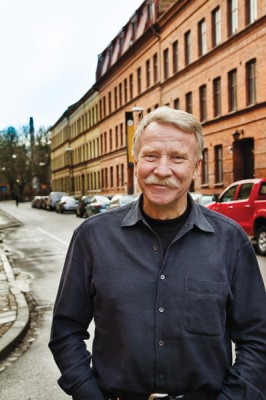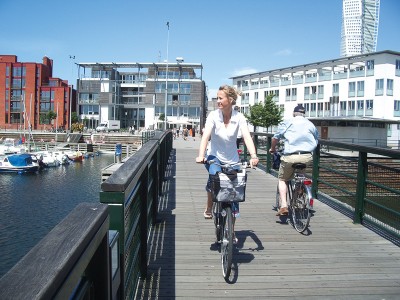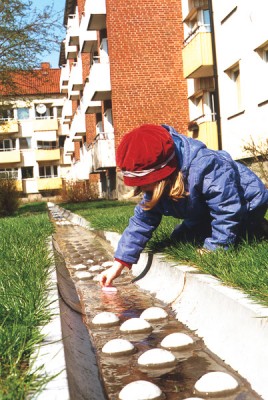Lessons from Malmo's Green Transormation

The year was 1994. Mr Ilmar Reepalu, then 52, was newly elected Mayor of the City of Malmö, in the south of Sweden.
But what he had inherited was not a pretty sight. The once-thriving industrial city of 240,000 had been in decline since the '70s; by the 1980s, its key shipbuilding industry had collapsed. Unemployment was rife and the city’s youths were leaving, and the situation worsened when industries shifted to Eastern Europe for cheaper labour following the fall of the Berlin Wall in 1989.
Local political instability took a further toll on the economy. Before Mr Reepalu assumed office, political power had flip-flopped between two parties for a decade.
“During this period, politics shifted 180 degrees every time [a different party won]. It was a very politically volatile period,” recounted Mr Reepalu, who was in Singapore last year for the World Cities Summit where he spoke on Malmö’s sustainability efforts.
Elected on a majority ticket, he saw a chance to reinvent the city. “I knew I would lose my own majority after four years… so I had four years to make all the difficult decisions,” said the mayor, who has been re-elected consecutively since 1994.
“I said, ‘Now if we want to change the city, there must be a long-term vision because the business sector won’t invest if they fear a 180-degree shift (in policies)’ after every election.”
A clear vision
So Mr Reepalu, along with the local government, gathered more than 150 representatives from the community’s various fields – politicians of all stripes, state officials, administrators, artists, academics and business people – to envision Malmö’s future. The result was a collective vision to make Malmö a city of knowledge.
With the transformation in mind, the city embarked on a number of key projects to turn Malmö around. This included the setting up of Malmö University. “At that time, in the city centre, the stores were closed and people were jobless. You really felt the poverty of the city,” said Mr Reepalu, who envisioned a city university that would attract young people and professors, create buzz in the arts and cultural scene, stimulate a bustling café scene and add life to the city.
And when Sweden joined the European Union in 1995, Mr Reepalu was convinced that Malmö had to look beyond traditional national borders for opportunities. So he pushed for the Öresund Bridge to be built between Malmö and the Danish city of Copenhagen – convinced that the two cities could prosper as an economic region. These projects, among others, helped to put the city back onto the path of economic recovery.
Leading the pack

But what has helped to set Malmö apart from other cities has been its overarching focus on sustainable urban development and housing.
As a young architect in the '70s, Mr Reepalu had attended the first United Nations Conference on the Human Environment in Stockholm where the seed of sustainable living was planted in his mind. Twenty years later, he was finally in a position to convince Malmö’s stakeholders that its future could be that of a leading environmental city.
So before “sustainability” and “climate change” became the world’s buzzwords, Malmö was already long on to them. From the late '90s onwards, the city embarked upon various sustainable urban projects, including turning “brownfields” or former industrial lands into eco-developments.
Making green issues local
Yet Malmö did not start off by just beating the “climate change” drum to residents. Instead, it started small, by addressing residents’ immediate concerns for cleaner and cheaper living.

For instance, shared Mr Reepalu, when city officials set out to rejuvenate Augustenborg, an ageing coal-dependent public housing estate, in 1997, they involved its residents in planning the redevelopment as they wanted residents to “own” the solutions they came up with.
“We formed groups and asked ‘How can we change the surroundings so you will stay and raise your children here?’” When residents replied that they wanted cheaper heating, the city retrofitted their homes to improve insulation and added meters so residents could monitor their usage. The latter led to energy-saving behaviour, such as taking shorter showers.

A resident even invented a stormwater filtration system that is now a Malmö export. Today, Augustenborg is a living testbed for cleantech initiatives, attracting thousands of international visitors eager to learn from it.
Making it easy to be green

So how did Malmö convince its residents to think and act more eco-consciously? “You start by making it easy,” said Mr Reepalu.
The city, for instance, has built recycling complexes for most apartment blocks in Malmö. Each of these complexes has separate containers visibly labelled to recycle glass, paper, cardboard, metal, plastic and batteries.
The city also enhanced laws to change behaviour, shared the mayor. For example, residents are rewarded for recycling by getting 2 kronor (S$0.40) for every plastic bottle and 1 krona (S$0.20) for a beer can. There is also a landfill tax of 500kronor (S$95) for every tonne of waste to encourage greater recycling, reusing and reducing of waste in Malmö.
As a result, Malmö residents now recycle 98% of their waste.
A cleantech leader

The city’s forward thinking and bold investments in cleantech – before it became a trend – have paid off. In less than 20 years, Malmö has gone from a polluted industrial city to a “cleantech city” where researchers and businesses develop new ideas, products and services that benefit the world.
Today, it has Sweden’s largest photovoltaic plant for solar energy and the world’s third largest wind park to tap wind energy. Now it is even aiming to be carbon neutral by 2020, with the entire city to run on renewable energy by 2030.
Once reputed for its bustling shipyard and towering cranes, Malmö today takes pride in leading the world in sustainable living, while safeguarding its residents’ future.
Learning from Failure
Malmö’s Kockums shipyard, which closed in the 1980s, was on prime land. The city invested millions to convert this brownfield to a sustainable development. In 1998, Malmö University opened here and then in 2001, a large-scale international housing expo, Bo01, was built. The bold pilot project showcased how polluted industrial land and water could be rehabilitated for sustainable developments. Bo01 became Sweden’s first climate-neutral city district, with energy produced from 100% renewable sources and organic waste converted to biogas for city buses. The expo was a financial failure but it has been credited for furthering eco-thinking in Malmö with its tangible showing of sustainable innovations.
Ridiculous Car Rides
To encourage cycling, the city built 410km of dedicated cycling paths and numerous bike stations for cyclists to park and take a shower before heading to work. More recently, it used humour to encourage cycling with a campaign highlighting how silly it was to drive short distances. Car drivers who shared the most ridiculous stories of their short drives won bicycles.
This is the final of a three-part series on the World Cities Summit. Read part one, The Wheel To Succeed, and part two, Lessons from a Park Ranger.
All photos from the City of Malmö.
- POSTED ON
Mar 8, 2013
- TEXT BY
Bridgette See









